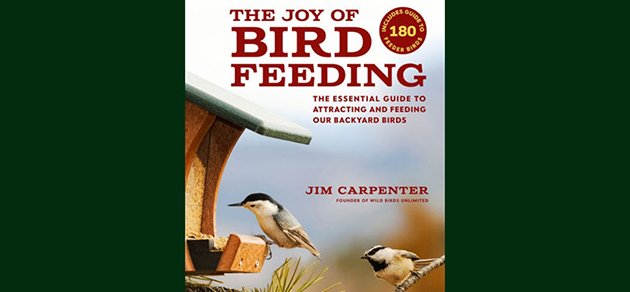
Happy Second Day of the New Year, 10,000 Birds friends! I am still in the old year as I write this. Snow is falling lightly and it is difficult to concentrate on the screen because my feeder birds are turning out en masse for the delights I set out this morning: Northern Cardinals and Mourning Doves at the safflower seed, Carolina Chickadees flying in for one seed per trip, Red-bellied Woodpecker and Carolina Wren at the double suet feeder (the Red-bellied rules and the Wren flies off as he swoops in), House Finches monopolizing the mixed seed feeders, keeping the Tufted Titmice waiting on the branches overhead, Dark-eyed Juncos and White-throated Sparrows investigating my poor little brush pile, and my favorites, two young Blue Jays, enjoying the peanuts before the squirrels realize the feeder has once again been filled and try to destroy it.
I came late to bird feeding. New York City apartments don’t allow feeders to be hung from fire escapes (though I know certain birders that skirt that rule), and it wasn’t until I had already been birding for four-and-a-half years that I obtained a small yard in central New Jersey in which I could place a feeder or two or three. And, then I realized my ignorance. Who knew there were so many different kinds of food for birds and so many different kinds of feeders, some pretty expensive, and how do you hang the darned things anyway, does every successful bird feeder set-up require creative skills in metalwork and string tying? It was an unexpected learning curve.
This is all building up to talking about The Joy of Feeding: The Essential Guide to Attracting and Feeding Our Backyard Bird, by Jim Carpenter, a photo-filled, substantial guide to bird feeding basics and a quite a bit more, published by Scott & Nix earlier this year. Jim Carpenter is the founder of Wild Birds Unlimited, the popular bird feeder and seed franchise. He brings to this book an academic background in biology and horticulture and, more importantly, decades of experience developing strategies for the best backyard bird feeding practices. There is a lot of information out there about feeding birds—web pages, pamphlets from bird feed retail stores and Audubon centers. However, there are few authoritative, up-to-date books on the subject; creating bird natural habitats appears to be more the current book topic these days–related, but not the same. So, I was excited when Scott & Nix sent me a review copy.
Carpenter sees bird feeding as an activity that, at its best, involves an ever-vigilant passion for creating and continually improving on the optimal avian habitat in your yard and other areas around your home, a habitat that will attract the widest variety of birds year-round. This sounds more intense than the book itself, which gently nudges you towards thinking about bird feeding in a strategic way: Do you provide a water feature? Places for the birds to perch near the feeders? Do you change your feed according to the seasons? Carpenter makes no bones about the purpose of bird feeding–it brings us humans joy and a break from the mundane, “a mental and physical sanctuary,” with secondary values of educating children about nature, bolstering conservation in the suburbs, and, yes, helping the birds themselves, especially in times extreme weather and food scarcity.
The Joy of Bird Feeding is comprised of 11 chapters that focus on bird feeding basics–detailed information on types of bird food, from sunflower seed to suet to mealworms, and how to distinguish the good from the mediocre; bird food storage; and feeders. He clearly loves feeders and presents colorful photographs of seemingly every type sold in the U.S., from thistle sock to a whimsical snowman stuffed with peanuts. But, this isn’t a catalog, and Carpenter also articulates what you should be looking for in a feeder, the importance of good construction and being able to easily clean it. He also devotes a lot of pages and photographs to the art of the pole system, something that has always intimidated me, and other ways to post or hang feeders.
A bit beyond the basics but still fundamental are chapters on bird feeding consequences and problems (squirrels and raccoons, too many blackbirds, hawks and cats, woodpecker damage, window strikes, extreme weather, and bird feeding in special situations, including retirement centers, condos, and apartments. The latter appear to be suburban apartments. The book is focused on suburban living, with little attention given to the unique challenges of urban bird feeding. There is also a major section on 180 bird species that is 123 pages long, about 1/3 of the book. Back of the book material includes References and resources a 12-page listing of Wild Bird stores; a Feeder Birds checklist; information on Project FeederWatch, including their list of the top 25 birds reported at feeders in each state; and a fairly good index to topics.
The real value of this book lies in the beginning sections on “The Five Steps to Bird Feeding Mastery,” and “Thoughtful Bird Feeding Stations Elements in Detail.” This is what separates The Joy of Bird Feeding from the other books, articles and pamphlets–a strategic method for figuring out what bird food to use in your home habitat and a step-by-step process for creating and implementing a bird-friendly place. (Certainly, reading this is a lot less time consuming than the five years it took me to figure out that birds need perches near the feeders!)
I was initially surprised by the extensive section on the birds themselves, thinking that, as an avid birder, I did not need to read it. But, there are things to learn here. The section is dominated by large portraits of the 180 birds that have been documented by Project FeederWatch as visiting feeders across North America (most of which do not come to my feeders, so reading it made me a little sad and jealous). Each ‘species account’ includes a range map showing residential, breeding, migrating, and rare areas and brief text describing most likely habitat, bird feeder behaviors and foods of choice (Ruby-throated Hummingbirds return to last year’s feeder, Pine Warblers will feed on sunflower seeds, Pileated Woodpeckers prefer an upright suet feeder with a ‘tail prop’), and assorted bits on mating, nesting habits and vocalizations. The Birds section will be of especially useful to people who are new to birds in general. The six-page introduction to the species accounts introduces the concept of migration and offers online resources for learning more from Project FeederWatch, eBird, the Great Backyard Bird Count, and other Cornell Lab of Ornithology resources.
One topic that Carpenter does not treat in depth is do-it-yourself feeders and bird food. The emphasis is on items you can purchase in a store, preferably, a Wild Birds store. I don’t think this is a bad thing, I respect Wild Birds Unlimited, and I have great respect for the owners and workers whom I have met in person and through social media. Personally, I love browsing and buying feeders and bird food. However, if you live in a city, like, let’s say, New York City, where birding groups have set up feeding stations in public parks, then you know that do-it-yourself bird feeders are a must. If this book goes to a second edition, I suggest that a chapter on easily made, sturdy, inexpensive bird feeders be added, with an eye towards those who live in the cities, don’t have yards, and want to feed the birds in their nearest green space–the public park. Recommendations for enlisting the cooperation of local authorities and other best practices could also be added. There is an audience for this type of information.
Like many bird feeder enthusiasts, I have tried making my own suet-type bird food, and I was surprised that at least one recipe was not offered here. Carpenter acknowledges that this is a popular past time and refers readers to the Internet for recipes. He then goes on to give the history of his discovery of Wild Birds’ proprietary suet-type food, Bark Butter, and extol its attractiveness to birds. Two pages are devoted to photos of birds eating this item. I kept turning the pages, expecting to be given the recipe of this magic bird food, but was instead referred to a web site where I could purchase it. This is a disappointment. I understand that Carpenter is the founder of Wild Birds Unlimited, believes in his stores and its employees’ expertise, and the products they sell. I think the discerning reader will understand that there are other bird feeding stores and items they could also purchase. However, I think that devoting so much page real estate to a proprietary product (in addition to the page spread, it is recommended throughout the book), is straddling the line between a quality book and a commercial.
Overall, the bark butter issue is a hiccup in what is an excellent, fun-to-read yet pragmatic, beautiful-to-look-at yet educational, up-to-date book about bird feeding. The Joy of Feeding: The Essential Guide to Attracting and Feeding Our Backyard Bird is highly recommended for bird feeding beginners and also for experienced practitioners. As Carpenter points out, things have changed over the years–types of seed, types of feeders, our knowledge of what is the most effective way of attracting birds. His Five Steps to Bird Feeding Mastery and 12 Elements of a Thoughtful Bird Feeding Station offer both practical advice and inspiration.
The U.S. Fish and Wildlife Service states that almost 59.1 million individuals in the U.S. feed “wildlife around their home,” Birders tend to downplay bird feeding, but I think we all secretly wish we had a large yard in which to create a wonderful play area for our birds. We also probably hope our feeders would attract a rare bird, like a Black-back Oriole. I certainly do. But, while I wait, I’m very happy observing the way a chickadee selects its seed.
The Joy of Bird Feeding: The Essential Guide to Attracting and Feeding Our Backyard Birds
by Jim Carpenter
Scott & Nix, Inc., May 2017
Paperback, 8 x 1.2 x 9.2 inches, 432 pages
ISBN-10: 1935622617; ISBN-13: 978-1935622611
$28.00 (discounts from the usual suspects)


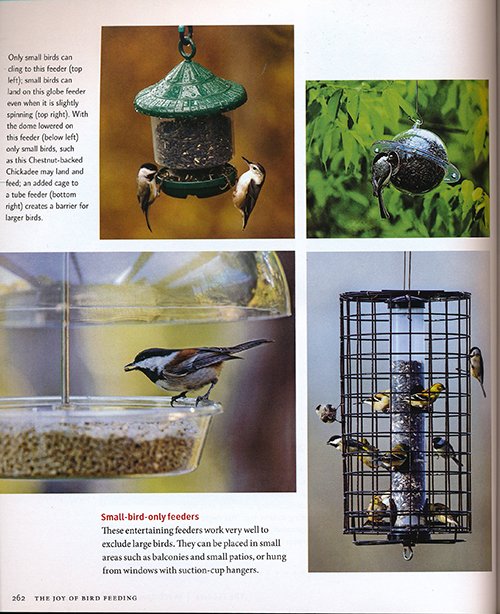
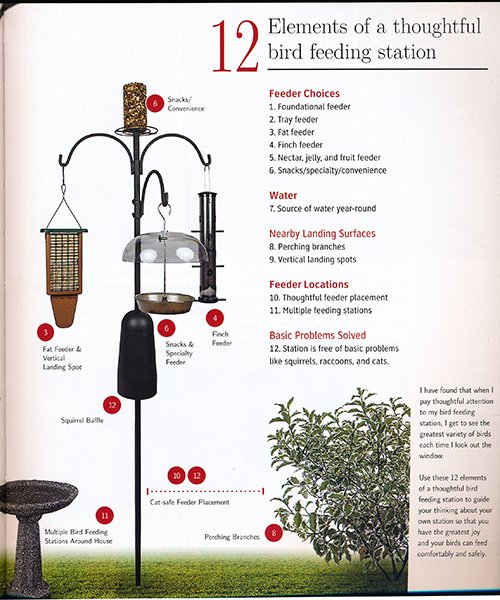
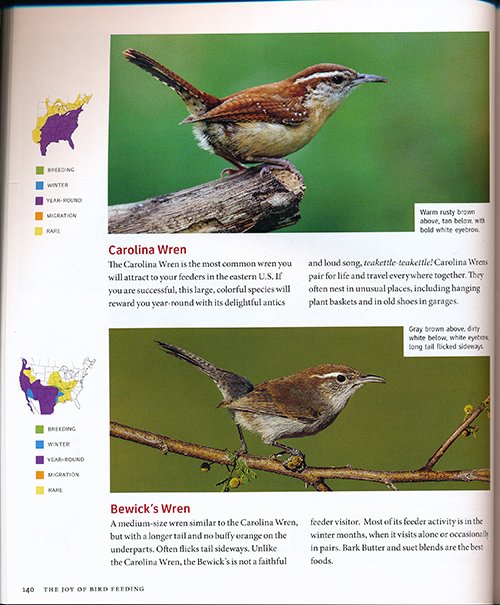
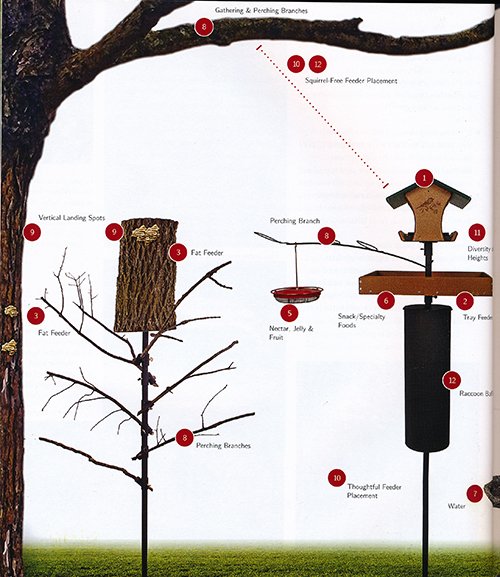
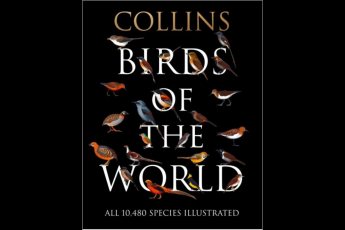


 New writers welcome – please contact us for details.
New writers welcome – please contact us for details.

















My Coal Tits and Eurasian Nuthatches are very choosy, often discarding much of the feed before selecting a choice tidbit and making off with it to return moments later for more. The Dunnocks and Woodpigeons benefit as they mop up on the ground below.
I am constantly astonished how the birds in my garden can devour 5 pounds of feed a week and still be able to fly!
It sounds as though the feeder hierarchy is very similar on both sides of the Atlantic.